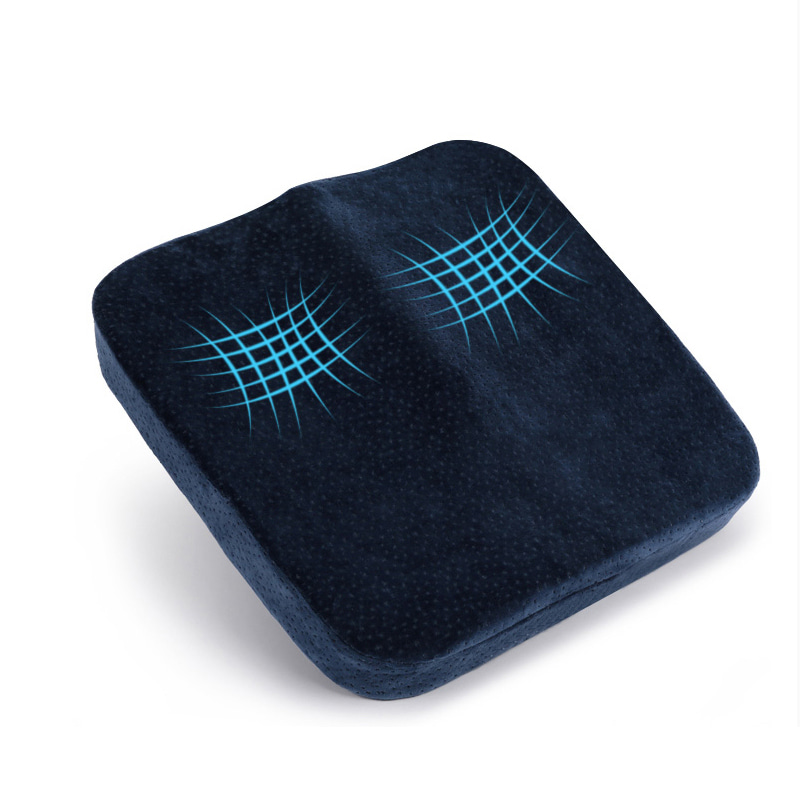Memory foam seat cushions are known for their comfort and support, but they can sometimes trap heat due to the dense nature of the foam. However, various design features and materials can help control heat build-up and improve comfort. Here's how memory foam seat cushions control heat build-up:
Gel-Infused Memory Foam: Many memory foam seat cushions incorporate cooling gel beads or layers into the foam. These gel infusions help disperse body heat away from the surface of the cushion, reducing heat retention. The gel acts as a heat sink, absorbing excess heat and providing a cooler seating surface.Phase Change Materials (PCMs): Some memory foam cushions are infused with phase change materials that absorb, store, and release heat as needed. These materials help maintain a stable temperature by absorbing excess heat when the surface gets too warm and releasing it when it cools down.
Perforated or Ventilated Memory Foam: Cushions with perforations or a ventilated design feature small holes or channels throughout the foam. These perforations allow air to flow more freely through the cushion, preventing heat from becoming trapped and promoting better breathability.Airflow Channels: Some memory foam seat cushions are designed with grooves or channels that help direct airflow. These channels reduce heat build-up by allowing warm air to escape and cool air to circulate.

Breathable Fabric Covers: The outer cover of a memory foam seat cushion plays a crucial role in temperature regulation. Breathable fabrics like mesh, cotton, or bamboo are commonly used as covers. These materials allow air to pass through, enhancing breathability and reducing the feeling of heat.Moisture-Wicking Properties: Fabrics with moisture-wicking properties can help manage sweat and moisture, keeping the surface of the cushion dry and comfortable. This helps prevent overheating and makes the cushion more pleasant to sit on for extended periods.
Open-Cell Foam Structure: Unlike traditional closed-cell memory foam, open-cell memory foam has a more porous structure that allows for better airflow. The open-cell structure prevents heat from getting trapped within the foam, promoting better ventilation and heat dissipation.Improved Air Circulation: Open-cell foam allows air to move freely within the cushion, helping to dissipate body heat more effectively and reduce the overall temperature of the seating surface.
Charcoal-Infused Memory Foam: Some memory foam seat cushions are infused with activated charcoal, which has natural cooling and odor-absorbing properties. Charcoal can help dissipate heat more efficiently and keep the cushion cooler for longer periods.Bamboo Infusions: Bamboo-infused memory foam or covers are also popular for their cooling properties. Bamboo fibers are naturally breathable and moisture-wicking, which helps regulate temperature and maintain a cool, dry surface.Hybrid Designs: Some cushions combine a thin layer of memory foam with other materials like high-resilience foam, latex, or cooling gel layers. These hybrid designs offer the benefits of memory foam's contouring support while minimizing heat retention by layering with cooler, more breathable materials.
Dual-Layer Construction: Cushions with dual-layer construction may have a top layer of memory foam for comfort and a bottom layer of a more breathable material, enhancing heat dissipation and airflow.
Temperature-Regulating Fabrics: Advanced fabrics treated with cooling technology can help regulate temperature by reflecting or dissipating heat. Some high-tech fabrics are designed to absorb heat and convert it to a cooling effect.Nanotechnology Applications: Some manufacturers use nanotechnology in the development of memory foam cushions to enhance cooling properties and reduce heat buildup.
Optimal Thickness and Density: The thickness and density of memory foam can also impact heat retention. Thicker and denser cushions tend to retain more heat. Cushions designed with a balanced thickness and density can provide comfort while minimizing the risk of overheating.
Memory foam seat cushions can control heat build-up through various innovative design features, materials, and technologies. The combination of gel infusions, breathable covers, ventilated designs, and advanced fabric technology helps maintain a cool and comfortable seating experience, even during prolonged use.